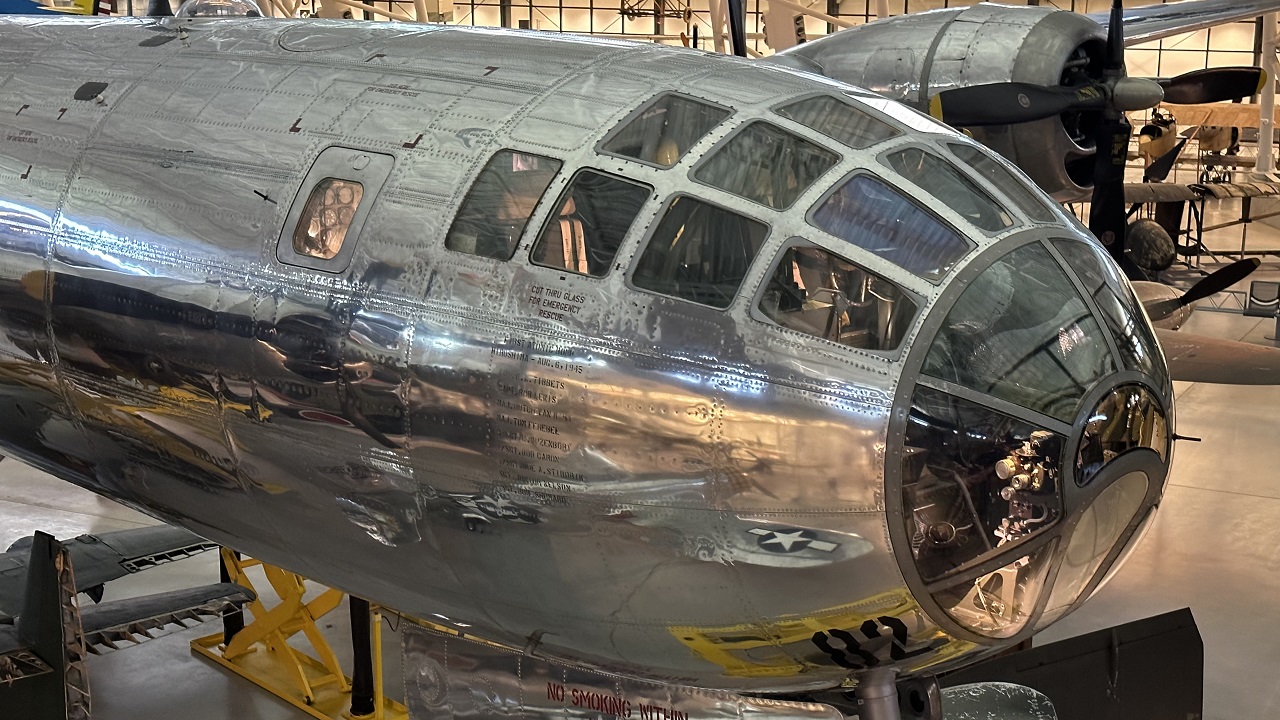The famous WWII-era B-29 Superfortress bomber is the only aircraft to ever deploy nuclear weapons in combat, as it was the aircraft that dropped atomic bombs on Hiroshima and Nagasaki.
The aircraft was also used to firebomb Tokyo and conduct extensive bombing raids throughout WWII.
For its time, the B-29 was extremely advanced technologically, as it was built with a pressurized cabin, dual-wheeled tricycle landing gear, and a central computer that regulated the fire control system. These technologies enabled an onboard attack system where one gunner and a fire control officer could operate four remote machine gun turrets.
Boeing wound up building 3,970 B-29 bombers within a short three-year period in the 1940s. Aircraft production stopped in 1946 and was eventually retired in 1960. This means the B-29 flew missions in World War II, when it was very new, and then also flew in the Korean War.
The Formidable B-29 Bomber
For its time, the B-29 was both ground-breaking and extremely effective, as it could fly low enough to attack with machine guns and also operate at altitudes sufficient to cover wide areas and attack from beyond the range of enemy fire. With its machine gun turrets, the B-29 could engage in limited air-to-air combat and attack enemy planes with gunfire.
For its time, the B-29 was extremely cutting edge, according to a Pacific War paper on the airplane that explains that the bomber’s fuselage was kept narrow by design, in part by the construction of two bomb bays. The aircraft had a crew of 10-to-14 airmen, and all of its gun turrets could be controlled remotely
Cutting Edge Technology
“The gun turrets were designed for minimum drag, and all of the gun turrets (except for the rear guns) could be controlled remotely from any of the gunner stations, which were deliberately located some distance from the turrets to isolate the gunners from the noise and vibration of the guns,” the Pacific War paper explained.
The B-29 was also built with a new generation of wiring, designed to operate in extreme temperatures by virtue of being built with mechanical and chemical resistance properties. Additional heat resistance would prove extremely significant in the event that the aircraft encountered incoming enemy fire, as the special wiring helped prevent the electronics from overheating or malfunctioning when damaged by attacks.
The aircraft design featured two bomb bays to keep the fuselage narrow.
The B-29 was flown by the U.S. Air Force, UK Royal Air Force, and Australian Air Force. The technology of the B-29 was apparently stolen by the Soviet Union. During WWII, three B-29s were forced to make emergency landings in the Soviet Union, and they were never returned. It is believed, according to numerous reports, that the U.S. B-29s were reverse-engineered by the Soviets to build the Tupolev Tu-4 bomber.
It also seems reasonable to examine ways the B-29 may have influenced the design of the Boeing B-52, a famous Vietnam-era aircraft that continues to fly today under many variants. The B-52 fuselage does seem to resemble a B-29 in certain respects as it is narrow and supported by large wings with multiple engines mounted on them.
Kris Osborn is the Military Affairs Editor of 19FortyFive and President of Warrior Maven – Center for Military Modernization. Osborn previously served at the Pentagon as a Highly Qualified Expert with the Office of the Assistant Secretary of the Army—Acquisition, Logistics & Technology. Osborn has also worked as an anchor and on-air military specialist at national TV networks. He has appeared as a guest military expert on Fox News, MSNBC, The Military Channel, and The History Channel. He also has a Master’s Degree in Comparative Literature from Columbia University.
From 19FortyFive
The Second American Civil War Has Begun

